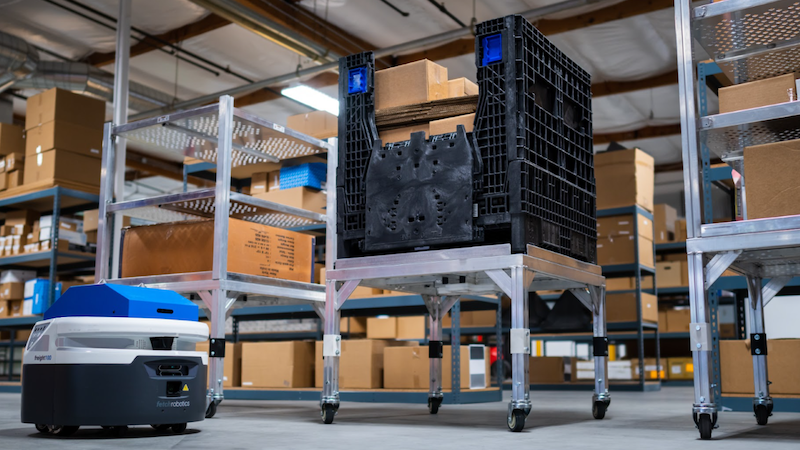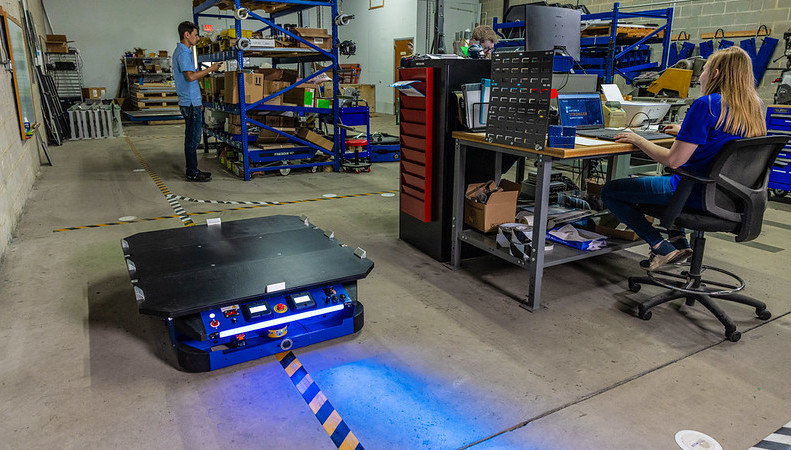Warehouse and distribution center performance is often measured using KPIs that relate to speed, efficiency, accuracy, and costs—and warehouse operators are under increasing pressure to improve and optimize productivity.
That’s not easy, and it’s certainly no longer a matter of finding ways to help workers perform their tasks faster.
In fact, current labor market conditions and increasing real estate costs, along with changes in consumer behavior and expectations, have pressed the accelerator on technological innovations that are transforming today’s warehouse.
While warehouse automation got started more than half a century ago, as many as 80% of today’s warehouses have implemented ZERO automation, and most of those that employ some kind of automated equipment or technology have only done so in the last decade or so.
That points to warehouses and DCs as fertile ground for improvement using robots and automation.
In this article, we’ll take a dive into some ways automation improves the work lives of warehouse employees, improves performance, controls operational costs, and even helps increase customer satisfaction.
Digital Automation Sets the Foundation
When the average lay person talks about automating the workplace, they usually mean robotics or some kind of physical automation (and we’ll get to that), but before we go there, it’s vital to acknowledge the role of process automation. Solutions like warehouse management systems and integrated software applications, along with barcode systems and mobile devices, have made it possible to automate data handling and reduce or eliminate manual workflows in warehouse environments.
Automating digital processes revolutionizes inventory and asset management, order fulfillment, and enterprise resource planning. In fact, digital process automation can move and handle information so quickly, efficiently, and accurately that in many warehouses it’s now the physical tasks and processes that really cry out to be optimized, streamlined, and accelerated.
Adding physical automation to a warehouse usually involves integrating digital solutions (such as a WMS) with hardware like IoT-connected devices, sensors, cameras, and robotic equipment to reduce the need for manual work and accelerate processes in nearly every corner of the facility.
How to Automate a Warehouse? Let Us Count the Ways
Automated equipment can perform many tasks that warehouses have long relied on humans to do—plus plenty of jobs that would require teams of workers or specialized manual equipment to perform safely. That means tasks become not only faster and more efficient, but also less risky and more enjoyable for the people on the job.
1. Conveyors, Vertical Lifts & Carousels
Goods-to-person (G2P) systems are some of the earliest and most straightforward ways to improve efficiency by reducing workers’ search and pick times. They can be a great choice—if your warehouse footprint and layout leave room. If you don’t, they can take up precious warehouse space and cause congestion and even problems with access.
2. Automated Sortation Systems
Sorting systems are often used in conjunction with machine vision, fixed industrial scanning and barcode labels or IoT-connected sensors and RAIN RFID-enabled tags and labels, along with conveyor and carousel systems that move products or orders. You can find them virtually anywhere, from receiving to shipping.
3. Automated Storage & Retrieval Systems (AS/RS)
These include both larger and smaller types of equipment to move various loads ranging from cases to pallets within predefined parameters. Examples include automated cranes that can handle cases, stack totes, or even stack pallets. They often run along a single-path track, or are integrated into a carousel-based system. AS/RSs can be particularly important for reducing risks to workers—for example, moving heavy and bulky items, or operating in refrigerated environments.
4. Automatic Guided Vehicles (AGVs)
AGVs are self-powered vehicles that follow wires, sensors, or magnetic strips to move along a fixed path. They can be convenient for carrying materials, items, cases, etc., but they need plenty of dedicated space and a simple, straightforward warehouse layout to do their best work. Human traffic and more densely used, complex spaces don’t make an ideal environment for AGVs.
AGVs can be available at a lower price point than their more flexible counterparts, autonomous mobile robots—as little as half or a third of the price, in some cases. So while they can’t offer the same versatility in terms of use cases, in certain facilities and for more specific jobs, they can provide a good solution.
5. Autonomous Mobile Robots (AMRs)
Unlike AGVs, AMRs are designed to work collaboratively with warehouse pickers and other employees. AMRs use a combination of cameras, sensors, and software to map a work area, define and redefine routes, and avoid obstacles—including humans.
AMR robots are incredibly flexible. They can be integrated with existing automation, so they can both be triggered by and trigger workflows as appropriate. Doors, gates, even handheld mobile devices can all be integrated to work seamlessly with AMRs—not to mention people. These autonomous robots typically feature an intuitive, touchscreen human machine interface and require minimal training to use effectively.
Let’s Talk About Warehouse Workers
According to the Bureau of Labor Statistics, the warehousing and storage industry employed nearly 1.6 million people in production and non-supervisory roles in October 2022.2 Do these workers have cause for concern?
Here’s why, by and large, the answer is no:
Warehouse robotics doesn’t replace workers; it supports them. By leaving the most tedious, repetitive, risky, error-prone, and time-consuming tasks to robot technology, thoughtfully implemented automation like AMRs can help warehouse operators achieve some really important goals beyond warehouse KPIs—like ensuring safer workplaces and greater job satisfaction for their people. In fact, a recent survey found that 75% of warehouse workers valued investments in automation, and want the assistance.
Moving and transporting items is a lot more complex than the average person might think, and integrating items like totes, pallets, drums, and other reusable transport items (RTIs) can help control costs, improve efficiency, and contribute to more sustainable operations. Learn more about how RAIN RFID implementation can play a key role in improving DC profitability when you download the infographic below. Click here or below to claim your copy now.







